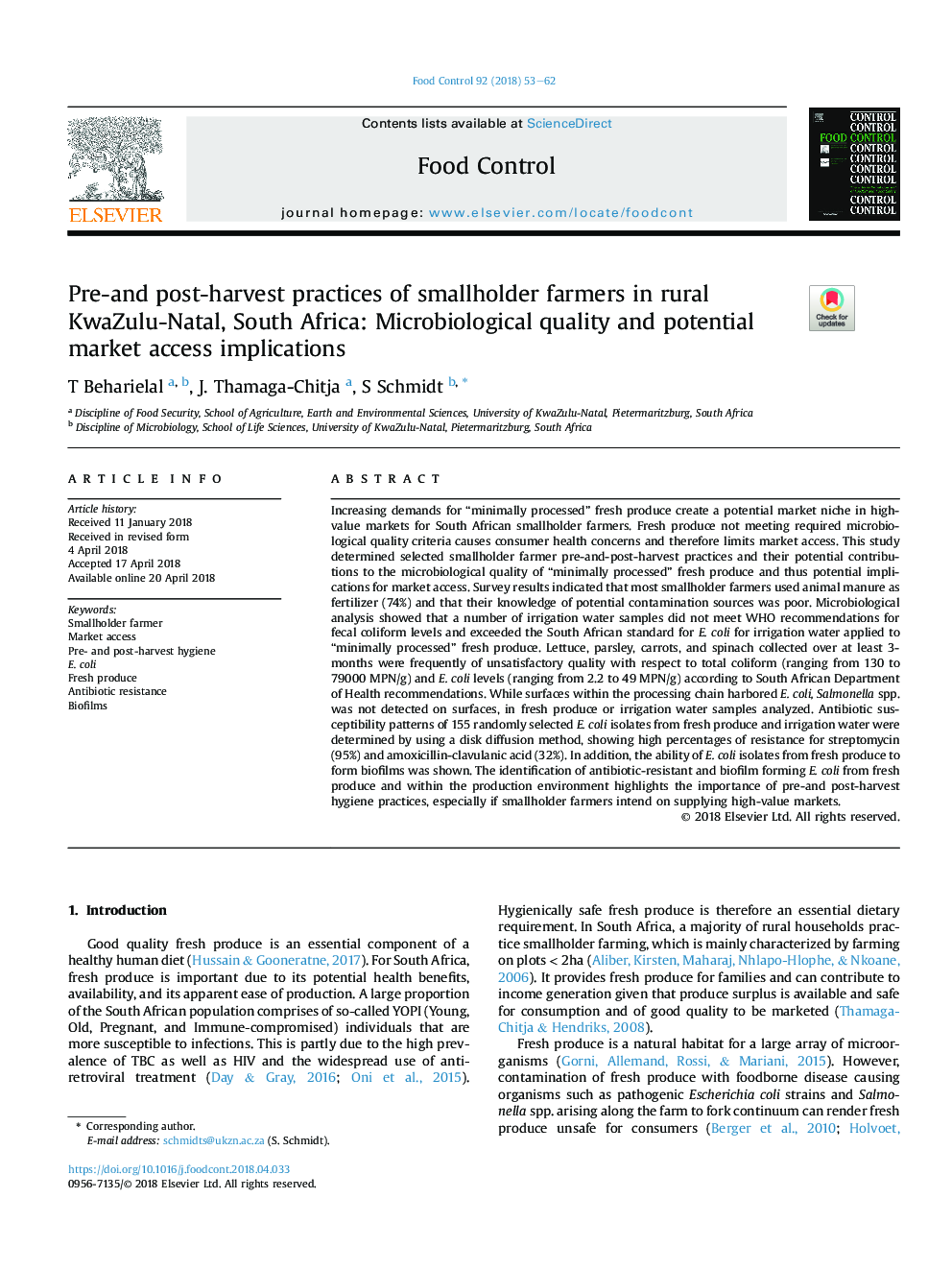| کد مقاله | کد نشریه | سال انتشار | مقاله انگلیسی | نسخه تمام متن |
|---|---|---|---|---|
| 8887812 | 1628372 | 2018 | 10 صفحه PDF | دانلود رایگان |
عنوان انگلیسی مقاله ISI
Pre-and post-harvest practices of smallholder farmers in rural KwaZulu-Natal, South Africa: Microbiological quality and potential market access implications
ترجمه فارسی عنوان
اقدامات پیش و پس از برداشت کشاورزان کوچک در روستای Квазулу-ناتال، آفریقای جنوبی: کیفیت میکروبیولوژیکی و پیامدهای دسترسی بازار
دانلود مقاله + سفارش ترجمه
دانلود مقاله ISI انگلیسی
رایگان برای ایرانیان
کلمات کلیدی
موضوعات مرتبط
علوم زیستی و بیوفناوری
علوم کشاورزی و بیولوژیک
دانش تغذیه
چکیده انگلیسی
Increasing demands for “minimally processed” fresh produce create a potential market niche in high-value markets for South African smallholder farmers. Fresh produce not meeting required microbiological quality criteria causes consumer health concerns and therefore limits market access. This study determined selected smallholder farmer pre-and-post-harvest practices and their potential contributions to the microbiological quality of “minimally processed” fresh produce and thus potential implications for market access. Survey results indicated that most smallholder farmers used animal manure as fertilizer (74%) and that their knowledge of potential contamination sources was poor. Microbiological analysis showed that a number of irrigation water samples did not meet WHO recommendations for fecal coliform levels and exceeded the South African standard for E. coli for irrigation water applied to “minimally processed” fresh produce. Lettuce, parsley, carrots, and spinach collected over at least 3-months were frequently of unsatisfactory quality with respect to total coliform (ranging from 130 to 79000 MPN/g) and E. coli levels (ranging from 2.2 to 49 MPN/g) according to South African Department of Health recommendations. While surfaces within the processing chain harbored E. coli, Salmonella spp. was not detected on surfaces, in fresh produce or irrigation water samples analyzed. Antibiotic susceptibility patterns of 155 randomly selected E. coli isolates from fresh produce and irrigation water were determined by using a disk diffusion method, showing high percentages of resistance for streptomycin (95%) and amoxicillin-clavulanic acid (32%). In addition, the ability of E. coli isolates from fresh produce to form biofilms was shown. The identification of antibiotic-resistant and biofilm forming E. coli from fresh produce and within the production environment highlights the importance of pre-and post-harvest hygiene practices, especially if smallholder farmers intend on supplying high-value markets.
ناشر
Database: Elsevier - ScienceDirect (ساینس دایرکت)
Journal: Food Control - Volume 92, October 2018, Pages 53-62
Journal: Food Control - Volume 92, October 2018, Pages 53-62
نویسندگان
T Beharielal, J. Thamaga-Chitja, S Schmidt,
